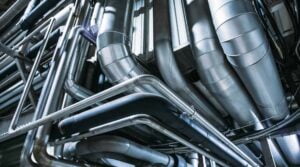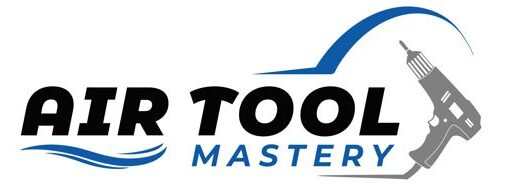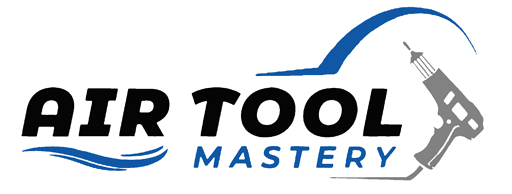Like the vital arteries in the human body, the compressed air pipes in industrial settings play a pivotal role in sustaining the lifeblood of operations by delivering a steady supply of compressed air. However, due to the high pressure and constant flow of air, these pipes are vulnerable to wear and tear over time, especially if they are not properly maintained.
Just as our arteries need to remain unclogged and healthy for optimum performance, so too do these vital conduits. Compressed air pipe maintenance is the process of inspecting, cleaning, and repairing these channels to ensure they continue to function at peak efficiency.
This task is not merely a box to tick but a critical measure to prevent operational downtime, extend equipment lifespan, and ultimately, safeguard the bottom line. In the grand machinery of industry, compressed air pipe maintenance is the silent, yet indispensable hero.
Basics of Compressed Air Systems
Compressed air systems are crucial for various industry operations, powering a range of tools and machinery. These systems function by compressing air in a compressor, storing it in a tank, and then distributing it through a network of pipes to machines, pneumatic tools, or processes that require it. The basic operation revolves around a cycle of compression, storage, and distribution.
Components of Compressed Air Systems
A typical compressed air system comprises several key components. At the center of the system is the air compressor, which forces more and more air into a storage tank, increasing the pressure. The compressed air is then held in the storage tank until needed for operation.
The distribution system, consisting of a network of pipes, carries the compressed air from the tank to the point of use. Additional components such as air dryers, filters, and pressure regulators ensure the air delivered is clean, dry, and at the appropriate pressure for its intended use.
How Compressed Air Systems Work
Compressed air systems work by converting power (usually from an electric motor) into potential energy stored in pressurized air, which can be released to perform work. The process begins with the intake of ambient air into the compressor where it is pressurized. The pressurized air is then stored in a tank, ready to be used.
When a tool or machine connected to the system requires air, the compressed air is released from the tank, travels through the distribution system, and delivers the necessary power at the point of use. It’s a continual cycle of compression, storage, and release, keeping industrial operations running smoothly and efficiently.
What Are Compressed Air Pipes Made of?
Before we dive into the maintenance bit, it is important to point out the compressed air pipes can be made of a wide range of materials depending on their types and applications. In this section, we will outline some of the materials used to make the pipes and the attributes that make these materials appropriate.
1. Aluminum
Aluminum pipes are one of the most common materials used in compressed air systems. They are lightweight, corrosion-resistant, and easy to install due to their push-to-connect fittings. Their smooth interior also makes them ideal for applications that require clean and oil-free air.
2. Stainless Steel
Stainless steel pipes are known for their durability and strength, making them suitable for high-pressure applications. They are also corrosion-resistant and can withstand extreme temperatures, making them ideal for harsh environments.
3. Copper
Copper pipes have been used in compressed air systems for decades due to their reliability and low cost. However, they may not be suitable for all applications as they are very susceptible to corrosion and can develop leaks over time.
4. Polyethylene
Polyethylene pipes are another lightweight and corrosion-resistant option for compressed air systems. They are also flexible, making them easy to install in tight spaces. However, they may not be suitable for high-pressure applications.
5. PVC
PVC pipes are the most affordable option for compressed air systems, but they are not recommended due to their low strength and susceptibility to cracking under high pressure. They are more commonly used for water and drainage systems.
6. Composite
Composite pipes which made with a combination of materials such as aluminum and plastic, offer the benefits of both materials. They are corrosion-resistant, lightweight, and easy to install, making them suitable for various compressed air applications.
What Does it Mean to Maintain Compressed Air Pipe Systems

Now that we know what a compressed air piping system is, how it works and what it’s made of, it’s important to understand the importance of maintaining these systems. Maintaining a compressed air pipe system involves regular inspections, cleaning, and repairs to ensure its efficient and safe operation.
This maintenance is necessary for any type of compressed air piping material, whether it is stainless steel, copper, polyethylene or composite. Neglecting maintenance can lead to various issues such as leaks, contamination, and reduced efficiency. These issues can result in costly downtime, repairs, and potential safety hazards.
What Compressed Air Pipe Maintenance Entails
1. Regular Inspections
Regular inspections are a crucial part of maintaining compressed air pipe systems. Inspections allow you to identify any potential issues such as leaks or corrosion early on before they turn into bigger problems. It is recommended to have inspections at least once a year, but more frequent inspections may be necessary for high-pressure systems or those operating in harsh environments.
During an inspection, you should check for any visible damage such as cracks, corrosion, or bulges. You should also inspect all connections and fittings for tightness and replace any damaged parts immediately.
2. Cleaning
Keeping compressed air pipes clean is essential for maintaining their efficiency. Over time, dirt, debris, and oil can build up in the pipes, causing blockages and reducing airflow. This not only affects the performance of the system but also increases energy costs.
To clean a compressed air pipe system, you can use compressed air or a specialized cleaning solution. Be sure to follow manufacturer’s instructions and wear appropriate safety gear when cleaning.
3. Condensate Management
Condensate, the moisture that accumulates in compressed air, can cause corrosion and contamination if not properly managed. Regularly draining condensate from the system is crucial for preventing these issues.
There are several methods for managing condensate, including automatic drain valves, manual drains, and centrifugal separators. Whichever method you choose, be sure to follow the manufacturer’s instructions and schedule regular maintenance as needed.
4. Lubrication
Many compressed air systems require lubrication to operate smoothly and efficiently. It is important to use the correct type and amount of lubricant for your specific system as recommended by the manufacturer.
Lubrication should be regularly checked and replaced as needed. Overlubrication can cause build-up and decrease system performance, while under lubrication can lead to increased wear and tear on components.
5. Regular Maintenance Per the Manufacturer
In addition to the specific maintenance tasks mentioned above, it is important to schedule regular maintenance for your compressed air pipe system. This will help identify any potential issues before they become larger problems, as well as ensure that all components are functioning properly.
Be sure to follow the manufacturer’s recommended maintenance schedule and any additional instructions for your specific system. Regular maintenance will not only improve system performance but also extend the lifespan of your equipment.
The Importance of Regular Maintenance

Regular maintenance of compressed air systems is crucial for several reasons. Below are outlines of why you need to keep your compressed air pipe system properly maintained:
1. Efficiency and Cost-effectiveness
Firstly, consistent upkeep of these systems promotes efficiency and cost-effectiveness. Over time, compressors can lose their effectiveness due to wear and tear, leading to increased energy consumption. Regular maintenance helps to mitigate these effects, ensuring that the system operates at peak efficiency. This not only leads to improved performance but also substantial cost savings in the long run.
2. Prevention of Leaks and Damage
Regular maintenance is key in preventing costly leaks and damage. The build-up of contaminants or the presence of worn-out parts can result in leaks, which can be detrimental to both the performance and longevity of the system. By routinely inspecting and cleaning the system, potential issues can be identified and rectified early, preventing extensive damage and costly repairs.
3. Safety Considerations
Lastly, safety considerations make regular maintenance non-negotiable. A poorly maintained compressed air system can become a safety hazard. For instance, a system operating under excess pressure due to a malfunctioning pressure regulator can cause catastrophic failures. Regular inspections and maintenance ensure that all system components are functioning properly, mitigating the risk of work-related injuries.
Common Compressed Air Pipe Maintenance Issues and Their Solutions
This far, we have established the importance of regular compressed air pipe maintenance. In this section, we will explore some common issues that can arise and their solutions.
1. Contamination Build-up
One of the most common issues with compressed air systems is contamination build-up. This can happen due to several reasons, such as poor filtration or moisture accumulation in the system. Contaminants like water, oil, and dirt can compromise the quality of compressed air, leading to decreased performance and potential damage to equipment. Regular inspection and cleaning of filters, drains, and dryers can prevent contamination build-up.
2. Wear and Tear
Over time, components of a compressed air system may wear out due to constant use. This can result in leaks or malfunctions, affecting the overall performance of the system. Regular maintenance can help identify and replace worn-out parts before they cause significant damage.
3. Pressure Drops
Pressure drops in a compressed air system can occur due to various reasons, such as leaks or clogs in pipes. These pressure drops can lead to decreased efficiency and increased energy consumption. Routine maintenance can help identify and fix any issues that may be causing pressure drops, keeping the system running at optimal levels.
4. Improper Lubrication
Lubrication is crucial for the proper functioning of air compressors and other system components. However, over or under-lubricating can cause damage to these components and result in costly repairs. Regular maintenance includes checking and adjusting lubrication levels as needed, ensuring that all parts are properly lubricated for optimal performance.
5. Overheating
Compressed air systems generate a lot of heat during operation, and if this heat is not dissipated, it can lead to overheating and potential damage to the system. Regular maintenance should include checking for any obstructions or buildup around ventilation ports and clearing them to ensure proper heat dissipation.
6. Safety Concerns
Neglecting maintenance of a compressed air system can result in safety hazards for employees working with the equipment. Leaks, malfunctions, and other issues can cause accidents and injuries in the workplace. Routine maintenance helps identify potential safety concerns and address them before they become serious risks.
Conclusion On Compressed Air Pipe Maintenance
In summary, the maintenance of compressed air pipe systems is a critical aspect that ensures the longevity, efficiency, and safety of operations. Regular maintenance not only helps identify and address any issues but also prevents them from occurring in the first place.
By following a comprehensive maintenance schedule and addressing any problems promptly, you can optimize their compressed air systems’ performance, reduce energy costs, and promote a safer work environment for their employees. Don’t neglect your compressed air pipe system’s maintenance – make it a priority to ensure its proper functioning and prolong its lifespan.

